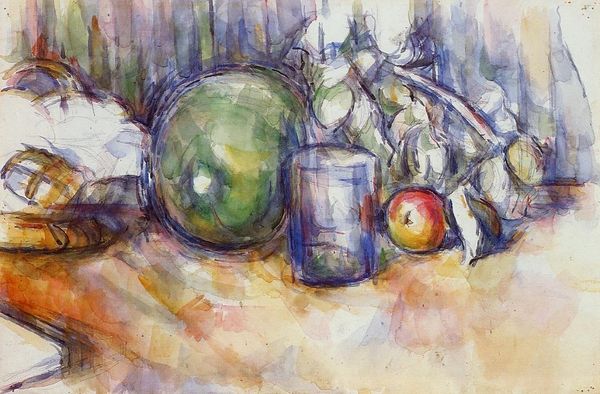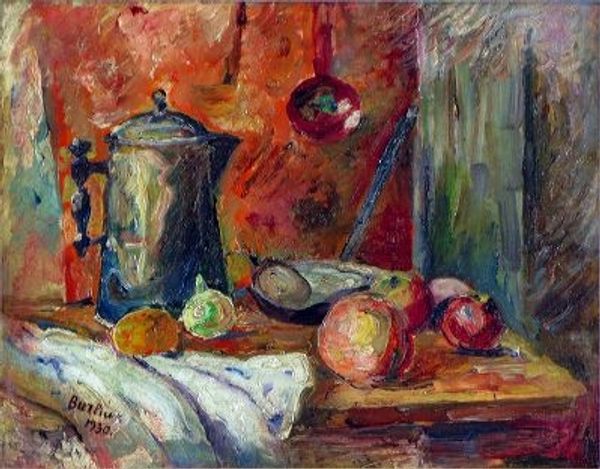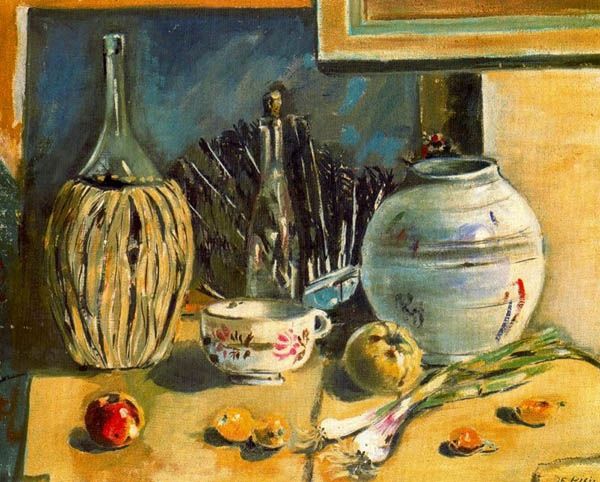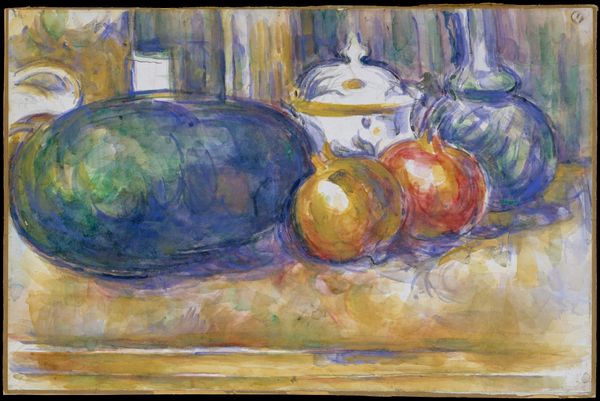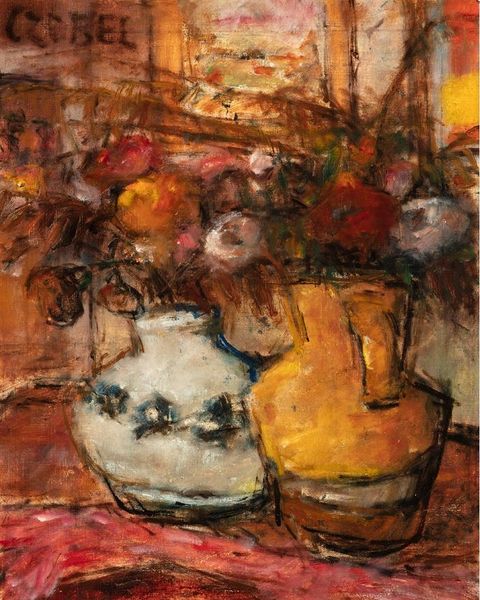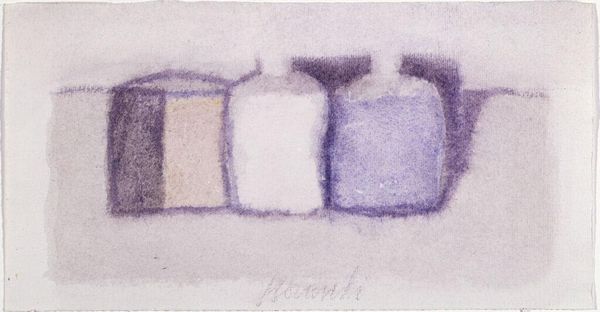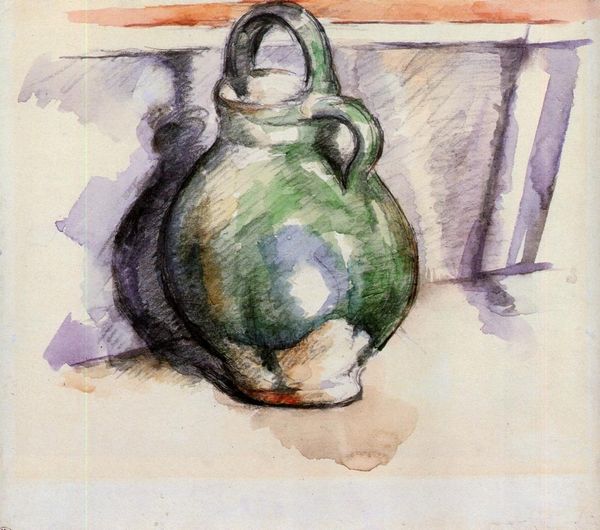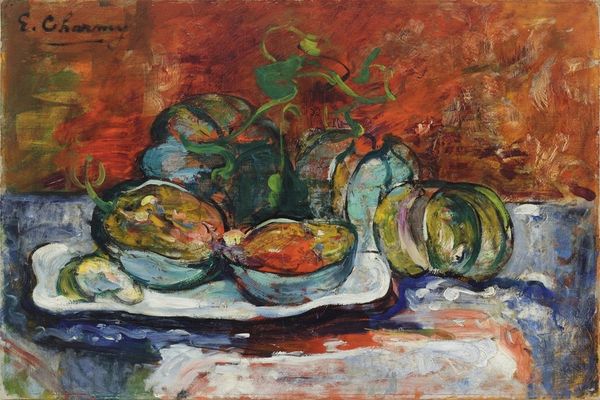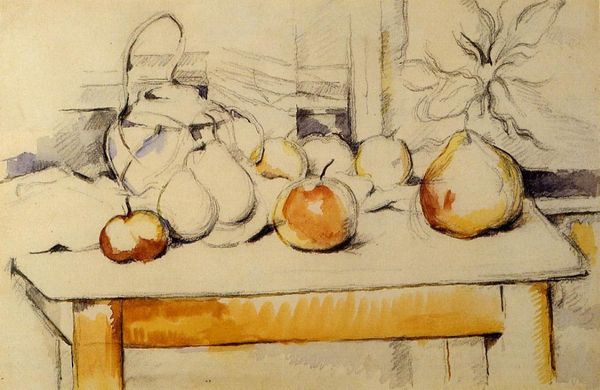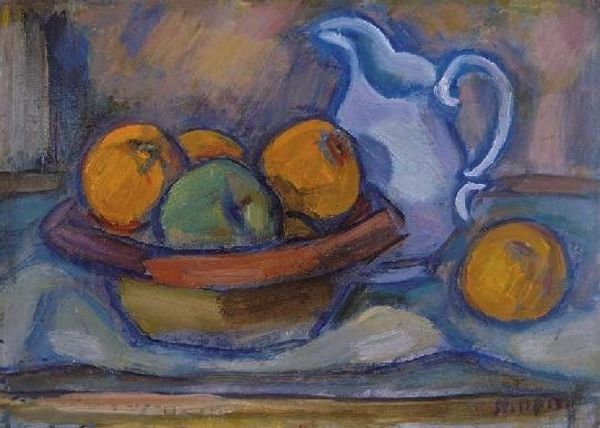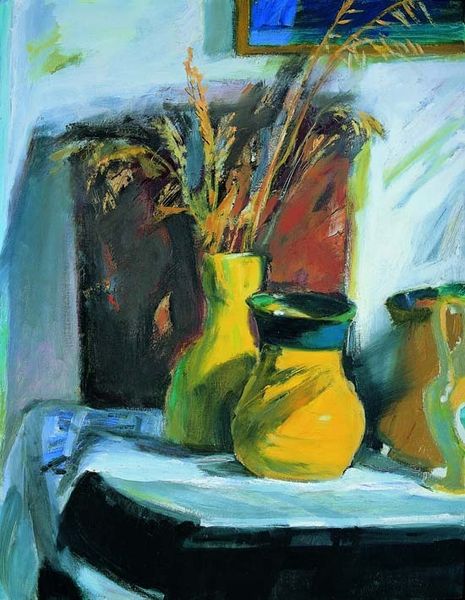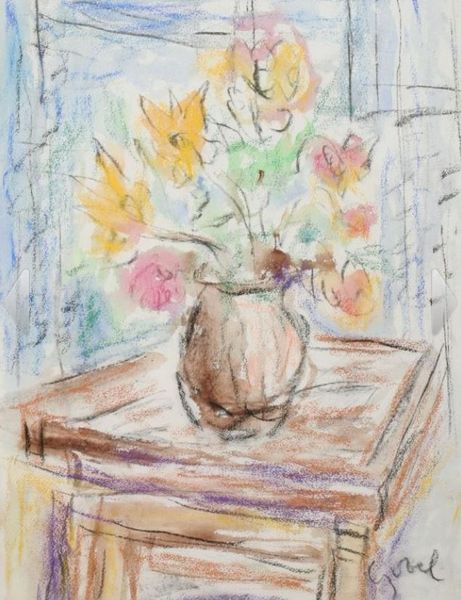
oil-paint, watercolor
#
still-life
#
oil-paint
#
handmade artwork painting
#
oil painting
#
watercolor
#
geometric
#
post-impressionism
Dimensions: 31.5 x 43.1 cm
Copyright: Public domain
Editor: So this is Paul Cézanne’s "Still Life with Carafe, Sugar Bowl, Bottle, Pomegranates and Watermelon," created around 1906, using oil paint. It's so delicate, almost ethereal. I'm drawn to how light seems to filter through everything. How do you interpret this work in the context of its time? Curator: Cézanne’s still lifes disrupt traditional hierarchies. Consider that at the time, still life was seen as a 'lesser' genre. Cézanne elevates these everyday objects—fruits, vessels—to subjects worthy of serious contemplation. He’s not just depicting; he’s exploring the very act of seeing, challenging the male gaze in art history, which often marginalized female perspectives and domestic scenes. What’s the effect of flattening perspective here? Editor: It's like he’s resisting a single viewpoint, embracing multiple perspectives at once. It's not about replicating reality but presenting its fractured nature. Do you see this as a rejection of academic art's focus on illusionism? Curator: Absolutely. Cézanne deconstructs pictorial space, paving the way for movements like Cubism. Furthermore, the objects themselves – the domestic fruits, the carafe – signal a radical shift. He pulls the gaze away from the idealized female nude or heroic historical scenes, placing value instead on the often overlooked, traditionally feminine sphere of the home. Why is this radical? Editor: It brings the everyday and domestic to the forefront. It suggests the beauty inherent in the overlooked aspects of life. I can see how this intersects with feminist ideas about recognizing value in everyday existence. Curator: Precisely! By challenging artistic conventions, Cézanne prompts us to reconsider what we deem worthy of our attention, reflecting shifting social and political values regarding gender and domesticity in early 20th century. He allows the domestic sphere to be considered as something important and of great social importance. Editor: It is empowering to consider artwork in the frame of feminist perspective. Curator: The act of re-evaluation becomes an act of empowerment. It transforms a simple still life into a profound commentary on the politics of looking.
Comments
No comments
Be the first to comment and join the conversation on the ultimate creative platform.
